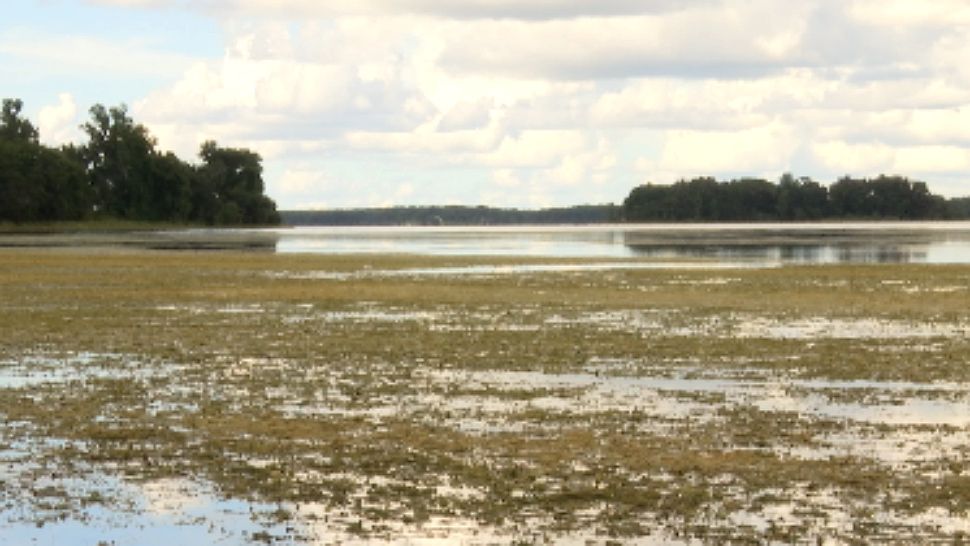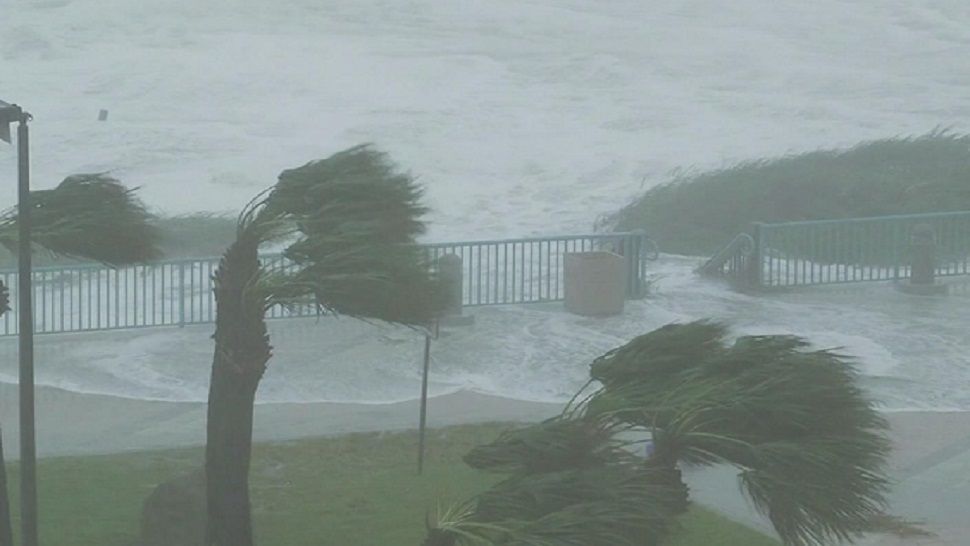HOWEY-IN-THE-HILLS, Fla. — Just as Hurricane Irma began to wreak havoc on Central Florida this time last year, it's only now that the Howey-in-the-Hills community is facing the aftermath of the storm.
- Hydrilla introduced when canal systems were opened after Irma
- FWC, Lake Co. spraying hydrilla to combat growth
- MORE: Hurricane Irma: One Year Later
As water levels rose one year ago, canals were opened up along Lake Harris and a silent invader made its way into the area’s water.
"We would have families out here on the lake doing water sports with their kids. It was really active out here, but obviously it's all died down," said Michael Hughes, property manager and resident of Bishop Gates Golf Academy.
It died down because of something growing just underneath the surface.
"The water... No, we never had this a year ago! The water was clear, because we could still use our boats last year," Hughes explained.
When Hurricane Irma hit, water levels along Lake Harris began to rise. Canal systems along the Lake Harris chain were opened, and water from neighboring fresh waterways opened up, allowing the invasive plant ‘hydrilla’ to spread.
Since hydrilla was introduced to this water just about a year ago, it has spread tremendously, growing more than an inch a day.
Now the hope is by spraying certain areas, they can try to get boaters back on the water.
"Yeah that was the last thing that we expected to be dealing with this a year later," Hughes explained.
Now Florida Fish and Wildlife and Lake County are on the water spraying a chemical designed not to harm people or animals, but targets the plant.
With so much ground to cover, Hughes is worried this mark left by Hurricane Irma won't be easily undone.
"No, it will never be the same. It's just the sheer vastness of this hydrilla; it's a real big problem." Hughes said.
Lake County expects to be back out spraying the hydrilla sometime next week.
Their plan, in coordination with the FWC, is to spray areas around marinas and then target main traffic areas.





